February 2008 Edition
CAD/CAM
Esprit adds new dimension to save on setup, machining
Paper Converting Machine Company (PCMC) programmers experienced difficulties using 2-D CNC programming software, such as the inability to verify the program on the computer. In search of a solution, the company switched to solid-model based CNC software that provides a realistic view of machining operations.
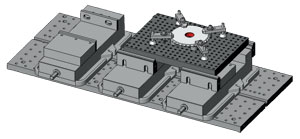 Figure 1: SolidWorks assembly for vertical machining center
Figure 1: SolidWorks assembly for vertical machining center
The new software also offers knowledge-based machining capabilities that make it possible to automatically apply predetermined optimized machining processes to each feature of the solid model.
"The knowledge-base features of the new software have substantially reduced programming time," says Daniel Parry, manufacturing engineering technician specialist. "Setup time is reduced because of our ability to verify the program in the software. Finally, the ability to optimize and standardize machining processes has resulted in machining time reductions."
Previously, using 2-D CNC programming software, the company exported wireframe or 2-D geometry from its CAD software and imported it into the programming software. The programmer then assigned tools to various features of the geometry to generate toolpaths. The lack of solid geometry meant that it was not possible to verify the program three dimensionally or to provide machine operators with realistic documentation. In the past, set-up sheets contained minimal information.
 Figure 2: SolidWorks setup sheet
Figure 2: SolidWorks setup sheet
Headquartered in Green Bay, WI, PCMC designs and manufactures converting machinery for the tissue, flexible packaging and disposables nonwovens industries. In addition, PCMC manufactures a complete line of wide web flexographic printing systems, coating and laminating machines and narrow web in-line printing systems.
Upgrading
PCMC decided to upgrade to the latest 3-D CNC programming technology. One of the main reasons they picked Esprit from DP Technology among several solid model-based CNC programming systems because of its advanced knowledge-base machining capabilities.
PCMC has taken full advantage of the capabilities of Esprit to develop a CNC programming process that achieves the elements that are important to the organization. The first step is creating a solid representation of the set-up necessary to machine the job at hand by selecting components from a SolidWorks design library which contains the setup assemblies available to the operator running the machine. The purpose is to provide an accurate simulation of the program, not only for programmers but also for the person running the job on the production floor.
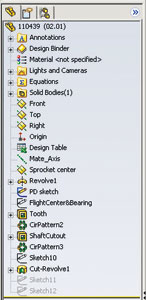 Figure 3: SolidWorks feature tree (right) and same feature in Esprit (below)
Figure 3: SolidWorks feature tree (right) and same feature in Esprit (below)
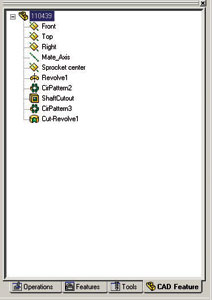
"Esprit is capable of importing a SolidWorks model, recognizing the features and automatically pulling from a library of standard machining processes to machine specific features," Parry says. "This saves time and provides the potential to standardize and optimize machining operations across our full range of machines (vertical and horizontal milling machines, turning and mill turn machining centers).
Programmers then create a set-up sheet which links to the SolidWorks assembly and contains all pertinent information about the job. CNC programmers output an official drawing using an engineering drawing template that contains all necessary proprietary information for it to be treated as a legal document within and outside the organization. These drawings include all information about part origins and program zero positions, specific notes that will give the operation smoother progress during set-up and also information about the part being machined (e.g., part name, part number, program number, who programmed the job, etc.).
"The parametric and associative capabilities of native SolidWorks drawings mean that if something within the setup changes, as it often does, the operators and programmers can be certain that their set-up drawings will reflect the changes and illustrates them through the revision blocks located at the bottom of the drawing," Parry says.
Feature recognition
The next step is to translate the SolidWorks set-up assembly and part to be programmed into Esprit. Esprit then uses knowledge-based machining methods to automatically organize the geometry into features that normally correspond to machining operations, such as pockets, islands, bosses and grooves. The software organizes these features into a tree that includes the machining operations needed to produce them. Rather than having to perform this work from scratch, PCMC programmers simply review the features and, in many cases, edit or re-arrange them to better suit the company's machining methods.
With Esprit's FX capabilities, the software and the user immediately know what the feature's name was in SolidWorks, the standard of the hole (ANSI Inch, ISO, etc.), the thread class, thread depth, tap drill size and depth, which fastener we use for this size hole and any other information that can be carried over from the Hole Wizard command in SolidWorks.
In the past, when a user brought in a solid model, it was just dumb geometry. It did not retain any specific information about the features. The programmer had to explain to the software specifically what the features are through chains (templates for tool path)."
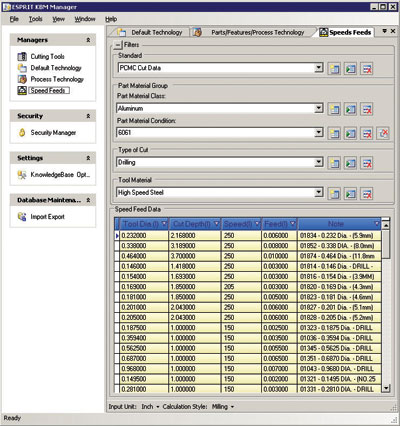 Figure 4: Esprit's knowledge base interface
Figure 4: Esprit's knowledge base interface
Knowledge base
"PCMC is currently in the process of creating a knowledge base that is filled with attributes which are unique to our company," Parry says. "We are teaching the software how PCMC cuts metal – what materials we have, what tooling we use and how we use them. Our goal is to be able to bring a SolidWorks model into Esprit, recognize the features and have it automatically pull from a library of standard machining processes to machine a specific feature."
When a programmer creates a new CNC program, the programmer can simply drag and drop machining operations from the library rather than creating them from scratch. In addition, programmers have worked to maintain the library by modifying operations based on feedback from machine operators and other sources.
Using the ¼"-20 hole example, the software first recognizes the hole. Secondly, the programmer uses the process manager command to have Esprit search the library for the processes that pertain to this particular feature. Esprit then produces separate operations for spot drilling, drilling and tapping process. Along with these operations, the software brings back the necessary tooling with speeds and feeds attached. Depths and clearances are automatically read from the solid model.
"The PCMC team has currently developed all standard and preferred tooling inside of Esprit, including speeds and feeds, for the machines that we presently support," Parry explains. "We support all vertical machining centers, as well as three horizontals. We have all of the necessary Esprit templates available for these machines, which contain all predefined parameters for a specific work center. We have modeled the standard work holding components for these machines and made them available through the SolidWorks design library where a user can preview a component or standard set-up before they create the assembly."
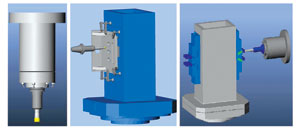 Figure 5: Horizontal machining center simulation
Figure 5: Horizontal machining center simulation
"With Esprit's knowledge-base, programmers and operators will benefit from consistency in all aspects of what it takes to machine a part," Parry says. "Tasks that used to take hours – such as creating features on a model or deciding which tooling to use – are now automatic. An important future goal for the manufacturing engineering department at PCMC is to free up programmers so that they can focus on other ways to save and make the company money, such as process improvement and set-up reduction."
"Esprit has become the standard CAM software here at Paper Converting Machine Company," Parry says. "Our two older 2-D CAM software packages are being phased out as we bring on more programmers and support more machines. As new functionality and stronger support from DP Technology continues to thrive, we are constantly reminded that, to quote Esprit's slogan, we made the 'right choice.' " DP Technology Corp.,
What do you think?
Will the information in this article increase efficiency or save time, money, or effort? Let us know by e-mail from our website at
www.ToolingandProduction.com or e-mail the editor at
dseeds@nelsonpub.com.